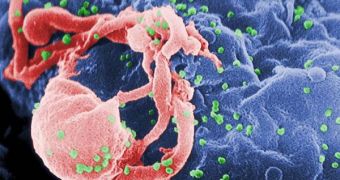Located at the border between Uganda and the Democratic Republic of Congo, the Bwindi region was one in which people died because of HIV infections and AIDS on a daily basis less than three years ago. Because the area is so underdeveloped, people living here didn't have any access to any kind of medical facilities, and diseases such as AIDS, malaria, and malnutrition wreaked havoc in the population. Now, thanks to the efforts of former United Kingdom GP, Dr. Paul Williams, the situation has drastically improved.
When he first arrived in Bwindi, all that existed in terms of health care infrastructure was a very basic clinic, understaffed and incapable of dealing with the demands of the area. In just three years, the UK medic managed to transform it into a community hospital, which now takes care of more than 40,000 people. Of them, more than 1,000 have been already tested positive for HIV.
“We're a mile away from the rain forest where there are mountain gorillas, right on the border between Uganda and the Democratic Republic of Congo. There aren't any tarmac roads here, there isn't any public transport, and lots of the patients live a day's walk from the hospital. Many of them live a subsistence existence and they can't afford to get here,” Williams explained to the BBC. Now, most of the investigations in remote areas are done via all-terrain ambulances, jeeps able to carry all the medical supplies doctors may need on location.
That's not to say they deal with emergencies, because there are little means of communication in Bwindi anyway. Rather, the doctors move to certain remote villages and settlements, where people are simply too far away to come to the hospital. They take HIV tests and also undergo a number of other analyses, and their risk of developing conditions that plague the area is also assessed.
The spearhead of the anti-HIV/AIDS efforts is the PointCare NOW machine, a medical device that was donated to the Bwindi hospital less than a year ago. The instrument is able to measure a certain type of white blood cells known as CD4 positive T cells. If their number is too low, that may be a signal that the patient is infected with HIV. The best part about the machine is that it only takes ten minutes to analyze a blood sample, after which time it prints a piece of paper detailing the subject's immune system status.
“I started a testing center in the hospital, then the mobile testing services, and then, once we had access to drugs, developed a treatment program. Now our death rates from HIV are very low. We're able to diagnose it early, manage it early and keep people living with HIV fit and well. Over a reasonably short period of time, we've been able to change HIV from being a death sentence into something that people can live with and lead productive lives,” Williams concluded.

 14 DAY TRIAL //
14 DAY TRIAL //